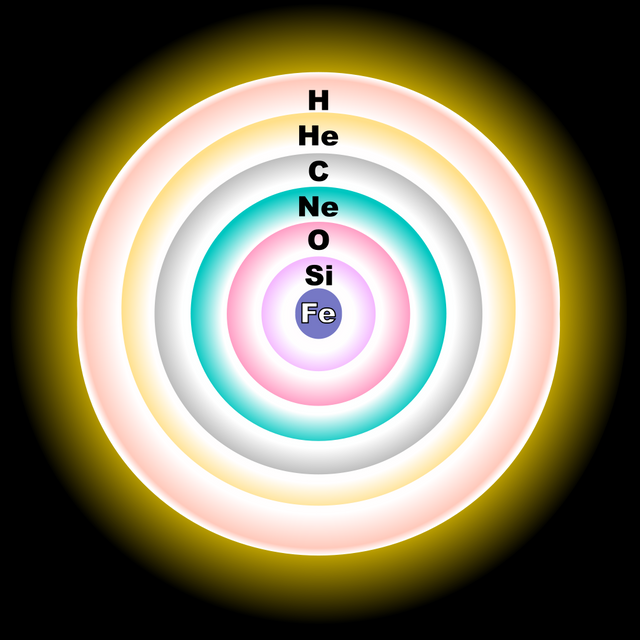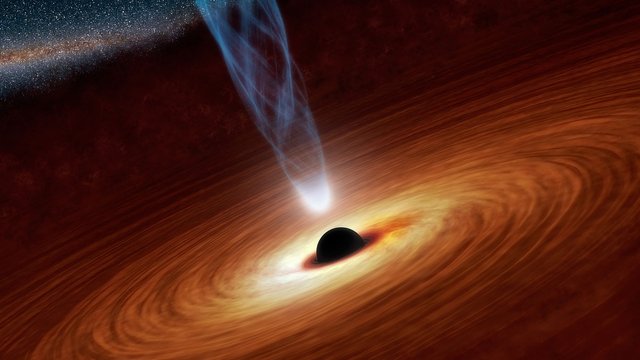What have in common a white dwarf, a neutron star and a black hole? They are all products of a dying star, just like our Sun.
A small exercise of imagination
Let’s imagine we have a solid object, with the same mass and volume as our Earth. We are also empowered with infinite amount of energy and control so we could slowly crash this three-dimensional object from all sides simultaneously, hence reducing its volume while the mass remains the same. The extreme friction between molecules will heat up the earth to many thousands of degrees Celsius. At the same time the electromagnetic repulsion between electrons will become stronger and stronger as atoms are squeezed together closer and closer.
At one point, the electrons will be squeezed so close to the protons that they will eventually touch and when this happens, they annihilate each other and turn into a solid mass of neutrons (particles with no electric charge). Now our earth has a diameter of about 5.5 soccer fields length, or roughly 600 meters.
By squeezing the Earth any further, our knowledge of involved physics principles diminishes, and new forms of exotic matter might appear in this extreme conditions. Squeezing it down to the size of a peanut, and the Earth will collapse under its own gravity into a black hole. Inside a black hole, none of the known rules of physics apply anymore. Here is where our understanding of physics stops.
Life of a star
The life of a star is dominated by two forces in balance: its own gravity and the radiation pressure of its fusion reaction. In the core of a star, hydrogen is fusing into helium. When all the hydrogen is exhausted, and if the star is massive enough, the fusing reaction will continue, as helium fuse into carbon, than carbon fuse into neon, than into oxygen and silicon, until eventually the fusion hits iron, which can not be fused anymore, and accumulates inside the core.
As heavier elements replace each other inside the core, lighter elements are stratified into layers.

• image from: wikipedia under licence CC BY 2.5
How long stars lives varies drastically, depending on how massive they are.
For example supermassive stars burn hot and fast, dying violently into supernovae a few millions years after birth.
When fusion is exhausted, the radiation pressure drops rapidly and the two forces are no longer in balance, the iron core collapses under its own weight. The outer part of the core reaches velocity up to 70.000 km/s as it collapses toward the center of the star. Now only the fundamental forces inside an atom are left to fight the gravitational collapse.
Neutron stars
If the quantum mechanical repulsion of electrons is overcome, electrons are squeezed into protons which will fuse into neutrons with no space between them. At the same time the outer layer of the star is catapulted into space in a violent supernova explosion.
The remaining core forms a neutron star, 25 km across and with its mass between 1 to 3 Suns. It’s so dense that one cubic centimeter of neutron star contain the same mass as a iron cube 700 meter across, or one billion tones. That’s an entire mount Everest compressed into the size of a sugar cube!
If you were to drop an object from one meter above the surface, it would accelerate to 7.2 million km/h and will hit the surface in 1 microsecond, releasing a tremendous amount of kinetic energy on impact.
The surface temperature of such a neutron star is 1 million kelvin, compared to 5800 kelvin of our Sun.
Neutron stars spin very fast, up to several hundred times per second . We call this type of star a pulsar which has a magnetic field up to 8 trillion times stronger than the magnetic field of Earth.
The neutron stars are some of the extreme objects in the universe, and also the coolest.
Black holes
If the mass of a neutron star is higher than 3 solar masses, the force of gravity will collapse it into an infinitely dense point in space called singularity. At a certain radius from singularity (called “swartzchild radius”) is the event horizon, the point of no return, from which not even light can escape.
Black holes come in different sizes. There are stellar mass black holes, with a few times the mass of our sun, and the diameter of an asteroid, and then are the supermassive black holes (with mass billion times the mass of our sun) which are found at the center of any galaxy.
A quasar is the short name of “quasi stellar object” and represents a black hole which continuously feeds on space matter, some of it coming from nearby stars. As it feeds, gas swirls around it with very high speed which forms an insanely bright orbiting disk, and if the black hole is swallowing a large amount of material, gigantic jets of gas are formed ejecting from its poles.

If the swirling matter is orbiting to close to a black hole, this bright disk is called an accretion disk, which heats up to millions of degrees, blasting out an enormous amount of radiation.
White dwarfs
However these really massive stars are an exception. Actually 97% of dying stars will end their existence as white dwarfs, the so called star corpses. There are two ways this could happen:
- Small stars, the so called “red dwarfs” burn out after trillions of years, until they eventually turn slowly into white dwarfs.
- Medium size stars like our Sun burn out faster than red dwarfs. After billions of years, all the hydrogen in its core will be exhausted, and it will eventually start fusing helium into heavier elements like carbon. While doing so, the sudden burst of energy will shed the outer layers in space, causing the star to swell into a red giant. When this process is over, more than half of its mass will be lost into space as a spectacular star nebula millions of kilometers across. What remain is its former core, a white dwarf with roughly the same size as the Earth, but with half the mass of the original star.
The surface gravity on such a white dwarf is 100.000 times higher then the Earth’s. This means that a teaspoon of white dwarf matter is about as massive as a car.
White dwarfs don’t fuse anymore, but are extremely hot (up to 40 times hotter than our Sun) and give a really stable heat energy output through radiation over many trillions of years, until they eventually cool down into a very dense solid sphere of diamond (a Black Dwarf). This will happen so far into the future that no regular star will shine anymore.
The fusion of all the other elements heavier than iron is made with absorption of energy, this is why the fusion inside stars suddenly ends at iron. All these heavier elements are created during a supernovae and inside the accretion disks of black holes, which are eventually ejected into space to form other stars, planets, life...
Perhaps it is true... we really are nothing but star dust...
Pulsars are my favorite. You can "listen" to some examples here
Downvoting a post can decrease pending rewards and make it less visible. Common reasons:
Submit
Yes, and perhaps if one would be slightly closer to us, space probes like Voyager could capture some of its pulsating magnetic field energy and turn it into electricity to power its ion thrusters.
Downvoting a post can decrease pending rewards and make it less visible. Common reasons:
Submit
Congratulations @electroscience! You have completed the following achievement on the Steem blockchain and have been rewarded with new badge(s) :
Click here to view your Board
If you no longer want to receive notifications, reply to this comment with the word
STOPDo not miss the last post from @steemitboard:
Downvoting a post can decrease pending rewards and make it less visible. Common reasons:
Submit
Resteemed by @resteembot! Good Luck!
Check @resteembot's introduction post or the other great posts I already resteemed.
Downvoting a post can decrease pending rewards and make it less visible. Common reasons:
Submit
Downvoting a post can decrease pending rewards and make it less visible. Common reasons:
Submit